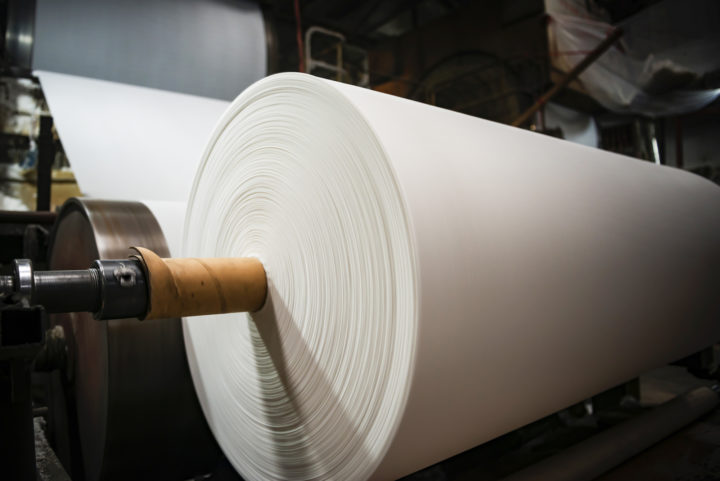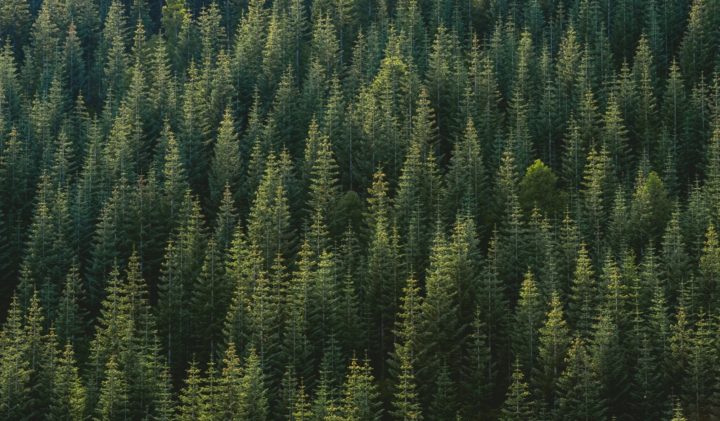A Guide to Choosing Sustainable Papers




It can be hard to know where to start when it comes to choosing a sustainable paper. Which one is best for my project? Which one reflects the values of my brand? And just how 'sustainable' are these materials, anyway?
Thankfully, our Insight team have compiled a handy checklist for you to reference when selecting a paper for your next design, branding or packaging project. Think of this as a manual that's useful for people and planet alike.
We have divided this list into six steps, to allow you to better understand a material's ecological footprint and, in turn, make the right choice for you. These include the paper's fibre source (or sources), the making process, energy sources, water consumption, carbon emissions and recyclability. Taken together, they cover the entire lifecycle of the material.
Source of Fibre
Paper is made from cellulose fibres. These can originate from a range of sources, from the traditional (wood) to the less traditional (cotton, bamboo, leather, fruit peels or grass).
In general, virgin fibres (i.e. new pulp) will tend to be stronger, lighter and longer – properties that directly correlate to the durability of the finished material and a more 'premium' feel. For this reason, many papers that utilise by-products or alternative sources of fibre will still contain a large proportion of virgin fibre.
From a sustainability perspective, regardless of whether a paper contains virgin fibre, by-products or recycled content, it's important to consider where these raw materials have come from. Can it be traced back to source? What is its country and region of origin? How were these raw materials harvested?
Making Process
The production of paper pulp, and the addition of colouring pigments, can create mixtures of ingredients with varying sustainable credentials.
There are, however, a number of industry certifications available for papers produced without harmful ingredients or hazardous chemicals. They include:
Elemental Chlorine Free (ECF)
Totally Chlorine Free (TCF)
Process Chlorine Free (PCF)
Heavy Metal Absence CE 94/62
Acid Free
Long life ISO 9706
Energy
European pulp and paper production makes up 24% of global output, and reportedly accounts for 12.6% of the EU's industrial energy consumption.
However, the paper industry is also the largest consumer and producer of renewable energy. (Around 50 % of primary energy consumption is from biomass.) With this in mind, it is worth exploring the proportion of wind, solar, geothermal or biomass energy used in the production of a paper – it might just be more sustainable than you think.
Similarly, the EU Ecolabel is awarded to materials that meet high environmental standards throughout their lifecycle, from material extraction to production, distribution and disposal. As a result, it is a reliable indicator of reduced electricity consumption, emissions and improved waste recovery.

Water
Water plays an essential role in paper-making; it is an indispensable element at each stage of the process. As a result, the paper industry remains one of the biggest consumers of water on the planet.
However, growing awareness of water scarcity and pollution has resulted in new legislative directives, forcing industries to reduce their water use and pollution, motivating them to implement innovations and carefully observe the impact of measures. As a result, it is worth acknowledging that, on average, 90% of a European paper mill’s water intake is returned to its source cleaner than when it went in.
Important factors to look out for here include the water source, in-mill water circuits (how many times the mill is able to reuse the water), and the amount and cleanliness of water returned to the source.
There are several industry-wide certifications aimed at reducing the use of harmful ingredients in the paper-making process. These include:
Elemental Chlorine Free (ECF)
Totally Chlorine Free (TCF)
Process Chlorine Free (PCF)
Heavy Metal Absence CE 94/62
Acid Free
Long life ISO 9706
ISO 46001 Water efficiency management systems
ISO 14001 Environmental management systems

Carbon Emissions
The production of 100,000 sheets of 100% virgin fibre paper, disposed of in landfill eight times, equates to a life-cycle carbon footprint of 6,000kg.The same batch of paper, recycled seven times and then sent to landfill, has a life-cycle carbon footprint of 3,200kg.
In both cases, this calculation is based on the energy required to extract a paper's raw materials, produce it, and either recycle or dispose of it.
It's clear, therefore, that there are several things we can do to minimise our carbon emissions when it comes to selecting papers. We can choose papers with recycled fibres; select manufacturers that employ renewable energy throughout extraction, production and transportation; opt for carbon-balanced paper products; and choose suppliers that support impactful conservation projects.
The most popular certifications in this area include the Woodland Trust's carbon-balanced programme; the Carbon Trust's Product Carbon Footprint Label; Carbon Footprint Verification; and the Carbon Neutral Badge.
Recyclability
Not all papers can be recycled. Yes, you read that correctly. That's because not all papers are made from cellulose fibres, for which our recycling infrastructure is currently optimised.
In some cases, cellulose fibres are mixed with plastics or bioplastics to give the finished material additional aesthetic, tactile or tensile properties. Some opaque papers turn translucent when subjected to heat and pressure; others bond seamlessly under the same conditions.
In some cases, paper may contain no cellulose fibre at all. A great example is stone paper, manufactured from calcium carbonate bonded with a small amount of HDPE plastic resin.
Keep an eye out for the fibre type (see 'Source of Fibre' above), as well as recyclability codes that demonstrate the material can be repurposed. The most common are: #20 PAP (corrugated fibreboard, i.e. cardboard boxes); #21 PAP (non-corrugated fibreboard, i.e. cereal and snack boxes); and #22 PAP (paper i.e. newspapers, magazines, books, etc.). You can also refer to end-of-life guidance provided by the material manufacturer.
We hope that each of these steps will enable you to choose a paper in a more conscious, sustainable way. And we hope it provides the foundation for you to write new and evocative sustainable stories for your brand, packaging or product. If you would like to understand more about any of the materials, processes or research contained in this article, get in touch via info@nirvanacph.com – we'd love to continue the conversation.
Posted 10 October, 2020 by Katie Kubrak